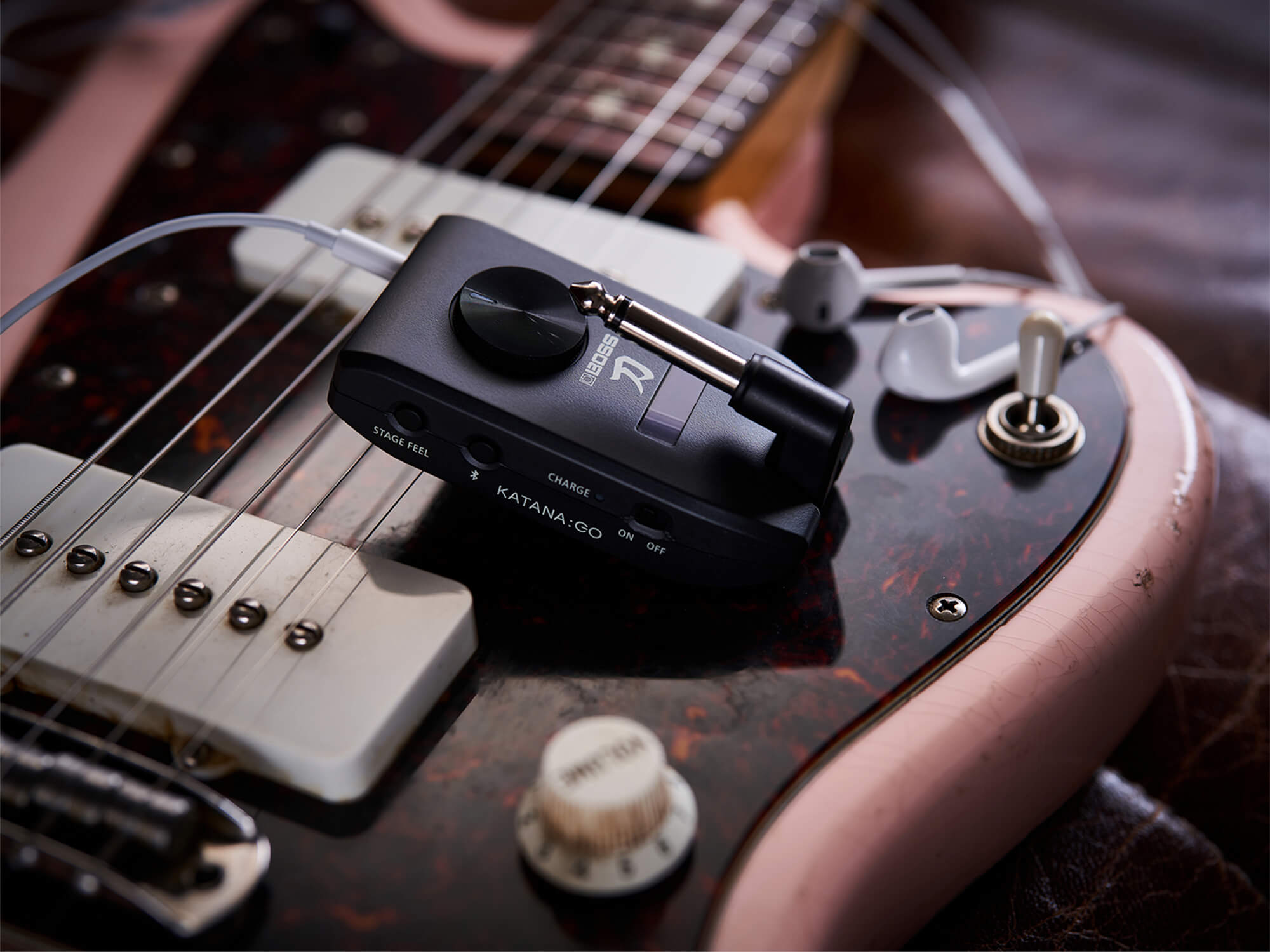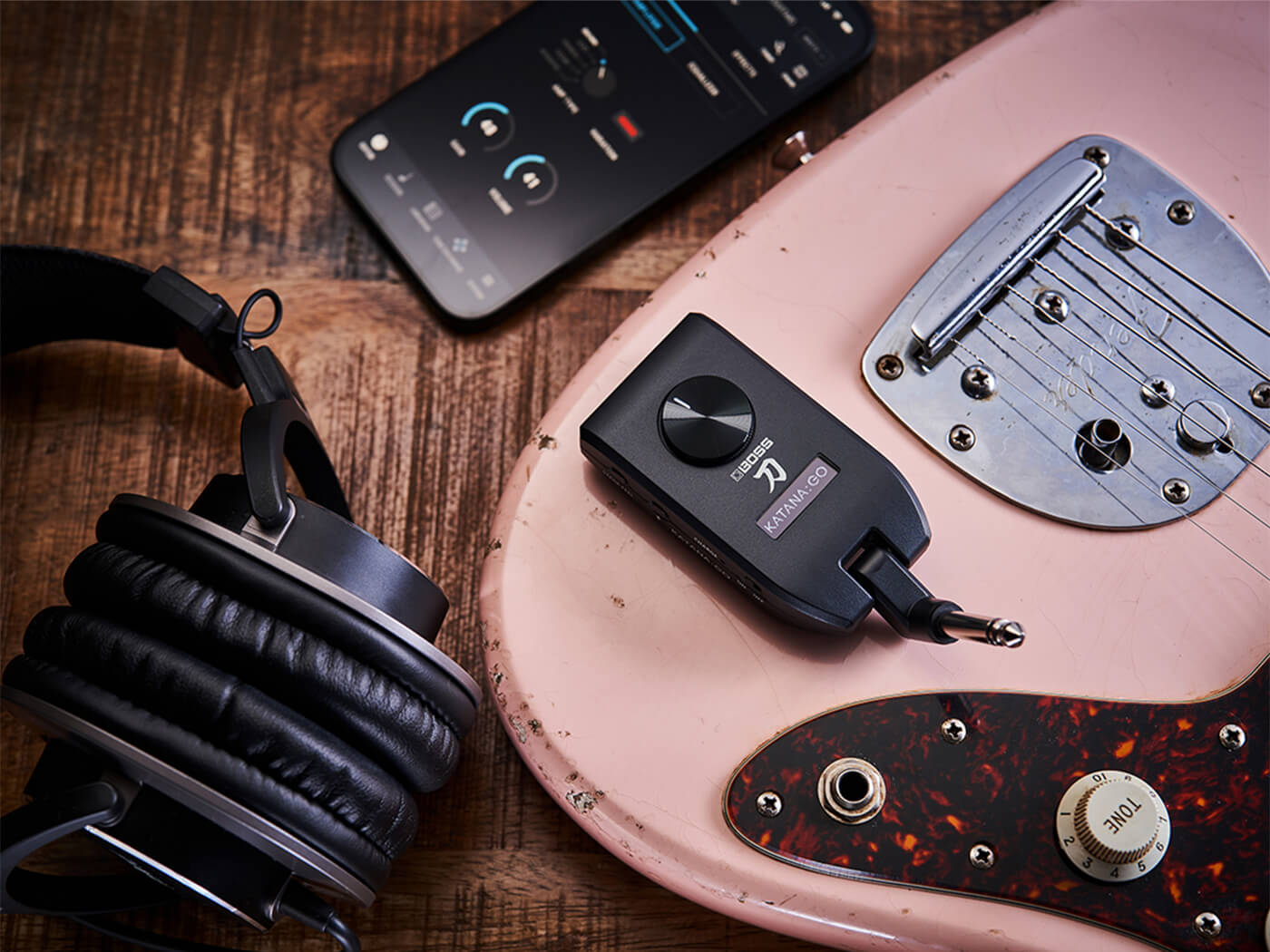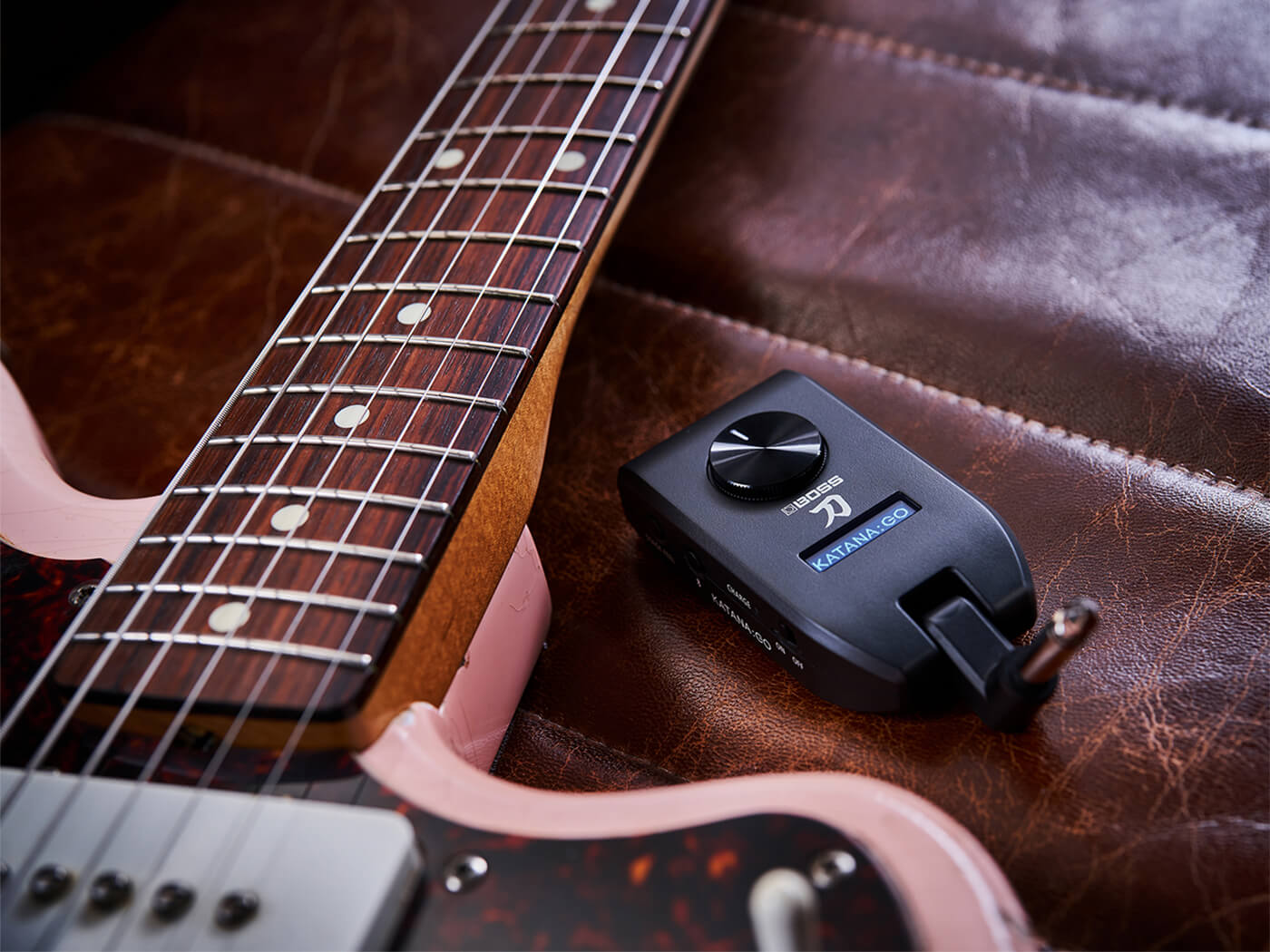Related Tags
Boss Katana GO review – is this the perfect headphone amp?
With a compact form factor and a huge array of sonic options, can Boss’ latest bring the Katana’s success to this smallest of amps?

Boss Katana GO
Review Overview
Our rating
8
Our verdict
$119/£119, boss.info
Arriving shortly before the pandemic meant that everyone spent a lot more time playing at home than they’d like to, the Boss Waza-Air headphones offered a pricey but compelling view of home practice – with wireless connectivity and spatially aware audio that meant you felt less like you were playing through cans and more like you were actually in a room with a real amp.
- READ MORE: Blackstar HT-20RH MK III review: the gigging amp staple becomes a versatile recording tool
They were the best part of $400, though and in the real world that is a LOT of money to drop on a practice aid – even one that will also do double-duty as Bluetooth headphones (and style-wise AirPods Pro Max they were not). Nevertheless, I was always impressed with the fundamental tech behind the Waza-Air, and so my interest was certainly piqued when Boss announced what effectively appeared to be something of a halfway house between the expensive Airs and the current king of the affordable headphone amp game – Fender’s Mustang Micro – in the shape of the Katana GO.

What does the Boss Katana GO do?
Put side by side and you’d be forgiven for assuming that the Katana GO is basically the same as the Mustang Micro, given that they’re aesthetically very similar – right down to the adjustable rotating jack plug that enables it to slot into pretty much any guitar seamlessly, and the big ol’ volume knob on the top.
In terms of functionality, there are also a lot of similarities – they both have a 3.5mm headphone jack for plugging your favourite wired headphones into, and they both have a USB-C socket that acts as both the charging point as well as allowing the unit to act as a direct recording interface to capture your songs. But after this things diverge.
Unlike the Mustang, which gives you a well-chosen but static selection of 12 predetermined amp and effects combinations, Boss offers 10 amps and 30 effects that can be put together and saved to one of the Katana GO’s 30 user preset slots. Intriguingly for Waza-Air fans, the Katana Go also features a ‘Stage Feel’ control, which promises to use “advanced Boss spatial technology” to make you feel like you’re playing in a room instead of headphones, and there’s even a built-in tuner.
All this is tweaked and edited using a GO-specific version of Boss’s well-trodden Tone Studio app – which connects to your iOS or Android device using Bluetooth, and you can also save and store your favourite presets here too.

Is the Boss Katana GO easy to use?
As you would expect from a headphone amp, getting things set up here is a doddle – simply charge it up, press the power button, plug in some ‘phones and plug it into your guitar, and you’re off.
Everything is laid out intuitively, with the tuner being activated by pressing the up/down rocker, which in normal operation enables you to scroll through the 10 presets in each of the three banks (which have their own buttons on the side). In truth, the buttons are a little fiddly until you get used to them, and it’s frustrating that swapping between banks takes you to the equivalent preset, rather than the last one you used (i.e. if you’re on preset four of bank A, swapping to bank B will automatically move you to preset four of bank B). The tiny OLED screen helps here of course, and once you get used to them, it’s quite straightforward.
Pairing the audio and MIDI aspects requires two different Bluetooth connections, but they’re easy enough to set up and it’ll remember them next time. The Tone Studio app is as solid and powerful as usual, with the ability to tweak sounds, EQ and ‘Stage Feel’, download new sounds from the Tone Exchange library, and pair peripherals like Boss’ new wireless expression and foot controllers to really open up the sonic potential.

How does the Boss Katana GO sound?
Another thing that you might well need to do via the Tone Studio app before you really try to get anywhere is tweak the global EQ settings to suit the headphones you’re using – as this can make a significant difference to your enjoyment of the whole experience. My Sony noiseless over-ears sounded fine, but plugging in a set of old Apple EarPods required some easing off on the high-end to make things sound full and authentic.
The sounds themselves are so bountiful that you could easily lose an afternoon just scrolling through the almost overwhelming number of options – with dozens of quality recreations of choruses, phasers, flangers, reverbs, delays and dirt on tap.
There are 12 effects slots in all, but two are saved for EQ, one for a noise suppressor, one for pedal-controlled effects like wah, and another for a dedicated solo boost. It’s nice that there’s the option to run two delays simultaneously, but frustrating that there’s only one dirt option to cover boost, drive, fuzz and everything in between. In a world where everyone is gain-stacking, it would probably have been more useful to be able to run a Klon into a TS than it would to double-dip your SDE-3000 delay models (though that is fun, don’t get me wrong).
The ‘Stage Feel’ control appears to be a fancied-up room reverb (similar to the ‘room’ controls on pedal amps such as the Strymon Iridium and Walrus ACS1. Unsurprisingly, it’s not as convincing as the technology in the Waza-Air cans, but it does a nice job of making the sounds feel more room-y than you would expect, though it can feel a bit too much at higher settings.

Is the Boss Katana GO worth it?
The elephant in the room with this product isn’t necessarily the one that it’s presumably been created to take on; the Mustang Micro. If it was, I’d have no problem telling you that for an extra £20 the Katana GO offers so much more for your money that it’s a no-brainer. But there is a different elephant here, and its name is the Positive Grid Spark GO.
The smallest of all the Sparks doesn’t sound quite as good through headphones as the Katana GO, but it has a speaker that actually sounds good, meaning that should you wish you can unplug and enjoy the sound of your guitar in the actual room, not a pretend one. It seems churlish to damn a headphone amp for just being a headphone amp, but the reality is that the current entry-level amp market offers solutions that don’t tie you so slavishly to a pair of cans. Is this the best headphone amp on the market? Undoubtedly, but the question you have to ask yourself is – is that what I really need?

Boss Katana GO alternatives
If you only really vibe with Fender-style amps, the Mustang Micro ($99.99/£105) probably does a better job of emulating those sounds than the Katana, but with less versatility overall. If you want something that’s cheaper but still does the job, Vox’s AmPlug 3 ($49.99/£49) range offers single-amp sounds that do a fair job of the company’s iconic tones. The aforementioned stalking horse here is the hugely impressive Positive Grid Spark GO ($129/£129), which comes with a real speaker and a jamming app to boot.
If you’re looking for something more high-end, the Boss Waza-Air ($399/£369) is a pricey but impressive upgrade, while Yamaha’s new YH-WL500 wireless headphones ($349/£348) are designed for musical instruments, and promise to turn any amp with a headphone jack into a wireless practice dream.
